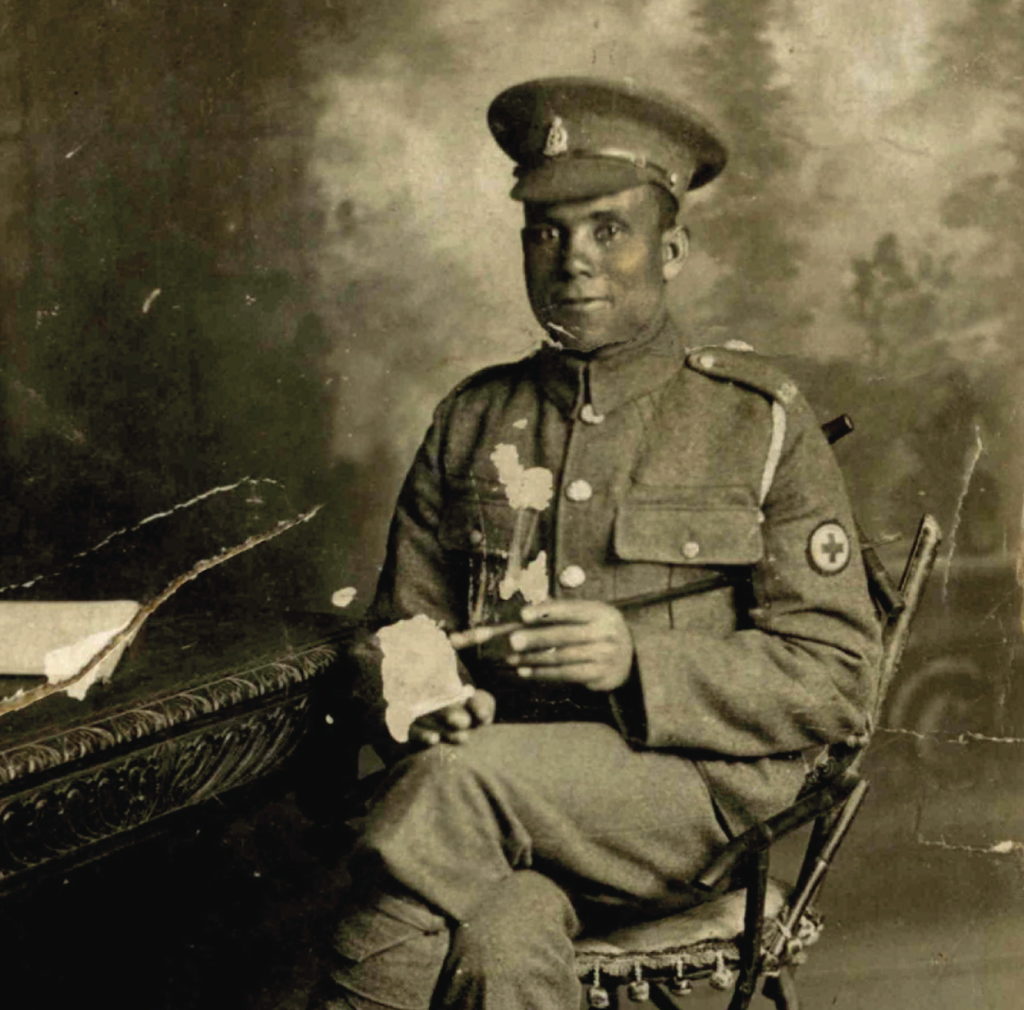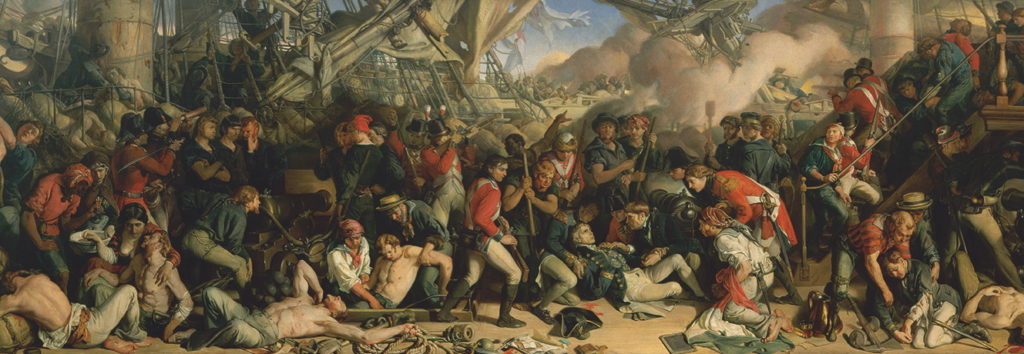All hands on deck
A new exhibition tells the story of the black sailors through history who pulled into port at Liverpool and in some cases settled down
“My great-grandfather, Edward James, was a black seafarer from Bermuda who came to Liverpool during the Crimean War, aged 14, while working as a cabin boy,” explains Ray Costello. “In 1873 he was virtually handpicked by my great-great-grandmother to marry her daughter, Harriet Gates, as he’d often stayed in her boarding house. Over time she’d realised he was God-fearing, didn’t drink and held on to his money. She saw him as quite a catch.”
The abolition of slavery in 1833 didn’t herald halcyon days for black sailors
As a port – once the world’s second largest – Liverpool has long been a cosmopolitan city, but Sarah Ann Gates’s eagerness to see her daughter marry a black sailor may still seem surprising, coming only four decades after the Slavery Abolition Act. But Costello, author of Black Salt: Seafarers of African Descent on British Ships, says attitudes toward men such as Edward James differed greatly across the years. As an academic – he has a doctorate in history and is an honorary research fellow at Liverpool University – and a descendant of a black sailor, Costello has both professional and personal perspectives.
“How black sailors were treated aboard British ships was, and pretty much always has been, a reflection of the times and general attitudes in society,” Costello claims. “A great illustration of this is the fact there were at least 800 black sailors fighting for the British alongside Nelson at Trafalgar in 1805 yet during the Second World War you get the Royal Navy – and then prime minister Winston Churchill specifically – finding methods to bar black sailors from British ships.”
Costello’s fascinating book has now inspired Black Salt: Britain’s Black Sailors, an exhibition at the Merseyside Maritime Museum. It combines personal stories with historical data, audio-visual presentations and memorabilia and explores the ever changing relationship between Britain’s military and civilian fleets and the black sailors who served aboard them.

Since the first dock was commissioned in 1715, Liverpool became a real magnet for sailors. If you were working at sea there was a fair chance you’d pass through, possibly stay and maybe even begin a relationship with a local woman. And as a typical ship had crew recruited from ports around the world, each vessel contained an astonishing mix of nationalities.
“Our earliest stories in the exhibition come from the 1500s with some looking at the network set up within the city to support both the international crews and the ships themselves,” says Maritime Museum curator, Ian Murphy. “But the main focus is examining both the difficulties faced by and opportunities offered black sailors from then right up to the present day, where we talk about people such as Belinda Bennett, a British citizen from St Helena, who became the first black woman to captain a cruise ship during 2016.”
The issue of slavery, naturally, looms large when examining the historical role of black sailors. “During the 18th century one of the main problems faced was the fact that slavery was still legal and black crew always had that risk of their heads being sold if the voyage didn’t work out or when they reached land,” says Murphy. “In theory, that should never have happened on British ships – though there are tales of unscrupulous captains treating black sailors as if they were possessions – but as the men were obviously more visible and often in strange cities, they were more exposed to that possibility.”
Although the abolition of slavery in 1833 didn’t instantly herald halcyon days for black sailors – or any sailors, for that matter: “Life was harsh for ordinary seamen,” says Murphy – it did remove that particular threat. And, agreeing with Costello, Murphy goes on to explain how the life of black crew members reflected British society itself.
“During the change from sail to steam, in the mid-19th century, black sailors began to become literally invisible when their previous jobs working as top men on deck and in the sails were replaced by roles in engine rooms. These ideas, of having black men out of sight, below decks as they’re stronger and more used to hot conditions than white men, were tied to the hardening of attitudes towards race during the height of the British Empire and colonial thinking.”
During this era Joseph Gibson was a black sailor, originally from Bridgetown, Barbados, who came to settle in Liverpool. After originally stowing away to escape a cruel father, in 1911 Gibson married local girl Florence Guy after staying in a boarding house run by her parents. Anne Audley, Gibson’s granddaughter and still resident in Merseyside, reveals the attitudes faced by black seamen both on land and aboard British ships during the early 20th century.
“Although he’d married my gran and they’d had eight children together the powers that be wouldn’t make him a British citizen so he had to continually go to sea,” she says. “I’ve also got a photograph of my grandad with all the other sailors from his ship and it’s what they call a full stop photograph. Because he’s black, they made him stand on the end, a good few inches away from everyone else, like a full stop.”
Despite such treatment, Gibson “still couldn’t wait to enlist when the First World War broke out as he was honoured to serve what he saw as his country”, says Audley. He enlisted in the Royal Army Medical Corps, serving as a stretcher bearer but was badly injured, receiving a head wound from a German soldier he was trying to help. He eventually returned to work as a seaman only to lose his life in an industrial accident at Liverpool’s Herculaneum Dock in 1941 – possibly the result of a dizzy spell from his wartime injury.
Costello says the the exhibition approached the issue of race with an open mind. “We’ve tried to avoid a certain agenda and instead produce a history of seafaring that looks at the wildly varying responses to the issue of black seamen on British ships. In 1797 there was a black ship’s captain called John Perkins in the Royal Navy, for example, and a black sailor led the initial expedition to reclaim the Mary Rose in 1547, so this is about the heroism, victories and triumphs as well as the problems.”
Audley, despite the struggles encountered by Joseph Gibson and his many colleagues, is also keen to focus on the positives. “I’ve always felt very proud of my grandad and my background, regardless of the bigotry he faced, and held my head up all these years. There’s good and bad in everybody and all my family have been brought up to respect every culture and every race. I’m so pleased to have helped express this in the exhibition.”

As part of the Black Salt exhibition, the Merseyside Maritime Museum will be showing Daniel Maclise’s epic The Death of Nelson painting. Centred on the dying admiral, cradled in the arms of Captain Hardy on his flagship’s deck, the work provides a visual reminder that black sailors were present on the Victory, two featuring prominently in the painting. The exhibition will examine in closer detail the Battle of Trafalgar’s black veterans.
Historically, Victory’s muster books – taken a few days before the 21st October, 1805 battle – show 10 sailors of African descent, with nine from the West Indies and one recruited directly from Africa. Records only state crew nationalities, not ethnicity, which is perhaps indicative that colour was not seen as a major issue when recruiting seamen. Black sailors born in America, Canada and European ports would also likely have been aboard the vessel.
Although difficult to verify, there is some evidence that a black sailor from Liverpool named James Brown was – alongside Swedish, Dutch, Italian, Portuguese, Danish, Russian, Indian and, incredibly, French seamen – fighting on the Victory that momentous day.

Leave a reply
Your email address will not be published.